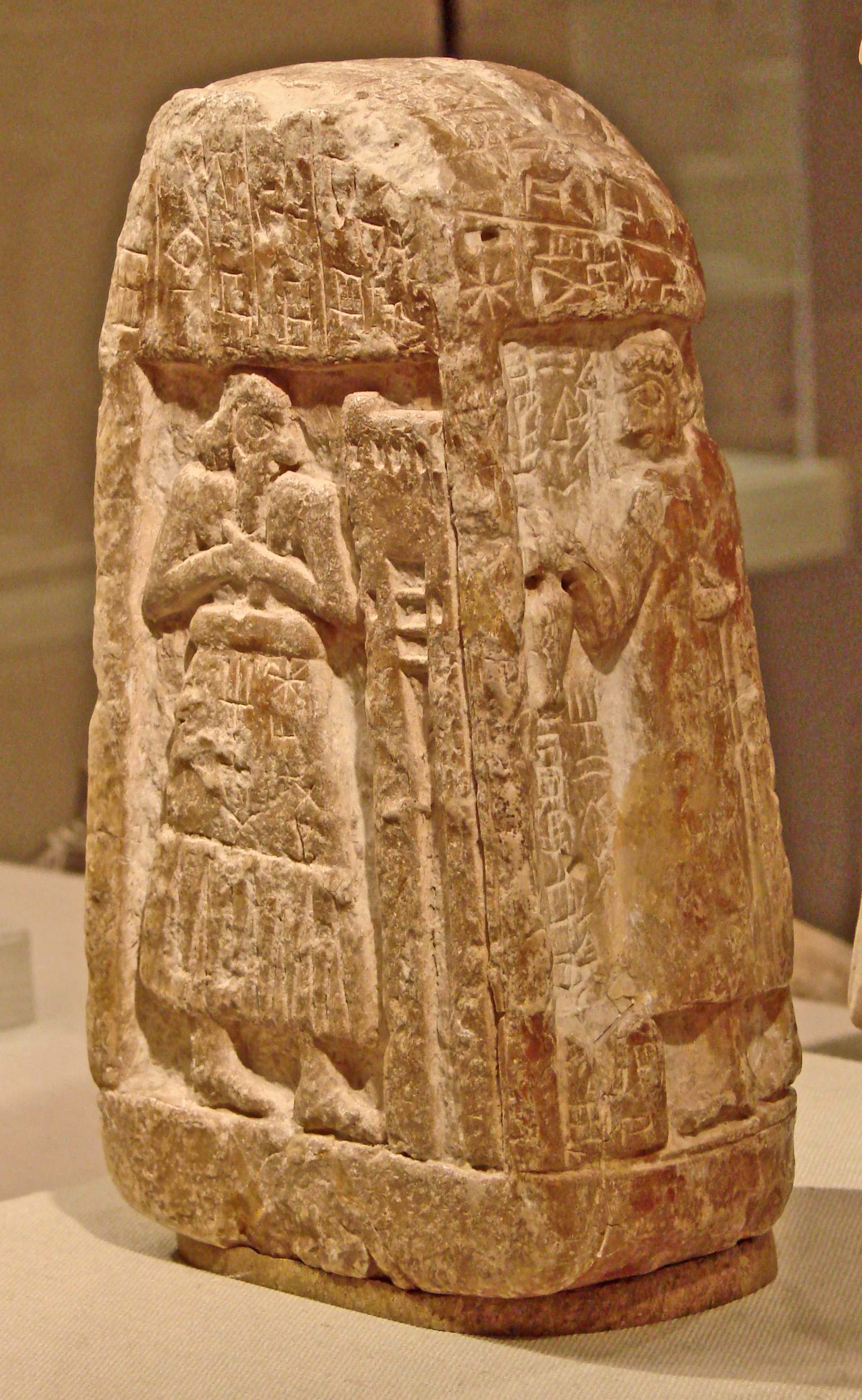Ushumgal Stele
Artifact: Stone tablet
Provenience: Umma?
Period: Early Dynastic I-II (ca. 2900-2700 BC)
Current location: Metropolitan Museum of Art, New York
Text genre, language: Ancient Kudurru; Sumerian
CDLI page
Description: Towards the beginning of the 20th century, scholarship on the political economy of early Mesopotamia considered a ‘temple-state’ model (Deimel:1931 and Schneider:1920) which emphasized land ownership by large institutions. This was subsequently amended by a number of scholars including Diakonoff (1969) and Gelb (1979), who emphasised also the role of private land ownership and economy. This stele provides an example of a transfer of land in an unclear context, adding textual and iconographic evidence to the discussion about early land ownership. Carved on four sides, this 22 cm high gypsum object shows a large man with an uncertain label, possibly to be read “Ušumgal, the pab-šeš priest of (the diety) Šara” (Gelb et. al: 1989). He is followed by a cohort of three smaller men (possibly leaders of the assembly, the UKKIN), and they all approach a building façade on the other side of which (side D in Gelb’s edition) stands a large female figure with an unclear name and designation. She is followed by a smaller female figure on side C with a similarly unclear adscription. The adscriptions for both of these figures include the sign “DUMU”, “child/offpspring” (note, not specifically ‘daughter’). An amount of land is recorded, about 18 acres of land (18 iku). The text of this Early Dynastic I-II inscription is still poorly understood, highlighting the great amount of work to be done still towards the decipherment of the earliest cuneiform.
(Kathryn Kelley, Oxford University)
Lineart:OIP 104 Plates (1989), pl. 12-13,16-17
Edition(s): OIP 104, pp. 43-47


